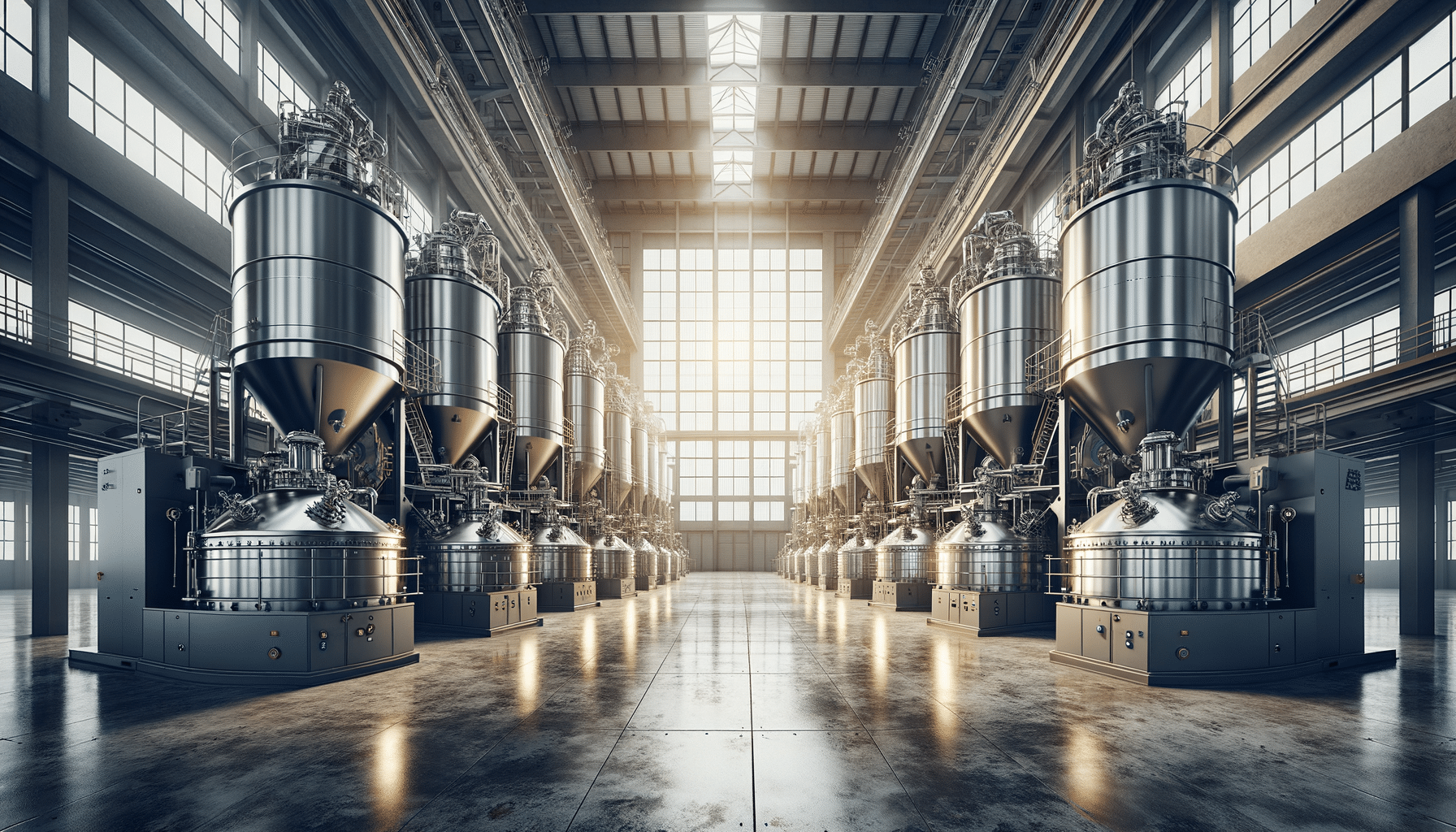
Understanding Industrial Mixers: A Comprehensive Guide
Introduction to Industrial Mixers
In the realm of manufacturing and production, industrial mixers are indispensable tools. These machines are designed to blend, emulsify, homogenize, or otherwise combine materials into a cohesive end product. Their importance spans a wide array of industries, from food production to pharmaceuticals, and even in the construction sector for materials like concrete and cement. Industrial mixers are pivotal in ensuring product consistency, improving process efficiency, and enhancing the quality of the final product.
The variety of industrial mixers available in the market today is extensive, each designed to cater to specific mixing needs. Understanding the nuances of these machines can greatly benefit businesses by optimizing their production processes and reducing operational costs. This article delves into the different types of industrial mixers, their functionalities, and how they contribute to various industries.
Types of Industrial Mixers and Their Applications
Industrial mixers come in various types, each suited for particular applications. The choice of mixer depends largely on the nature of the materials to be mixed and the desired consistency of the end product. Here are some common types:
- Batch Mixers: These mixers handle a set amount of material at a time, making them ideal for processes that require precise control over the mix ratio.
- Continuous Mixers: Designed for processes where materials need to be mixed continuously, these mixers are efficient for large-scale production lines.
- High Shear Mixers: These mixers are used when a thorough mixing of materials is required, often in the production of emulsions or dispersions.
- Ribbon Blenders: Known for their versatility, ribbon blenders are used in the food, pharmaceutical, and chemical industries for mixing powders, granules, and pastes.
Each type of mixer has its unique advantages and is selected based on the specific requirements of the process. For instance, high shear mixers are preferred in the cosmetic industry for creating stable emulsions, while ribbon blenders are favored in the pharmaceutical industry for their gentle mixing action that preserves the integrity of delicate ingredients.
Key Features and Technologies in Modern Industrial Mixers
The evolution of industrial mixers has been driven by advancements in technology, leading to more efficient and versatile machines. Modern mixers incorporate a range of features that enhance their performance:
- Automation: Many industrial mixers now come equipped with automated controls that allow for precise adjustments to speed, temperature, and mixing time, thus reducing human error and increasing productivity.
- Energy Efficiency: Newer models are designed with energy-saving technologies to minimize electricity consumption while maintaining high performance.
- Safety Features: Enhanced safety mechanisms, such as automatic shut-off and overload protection, ensure safe operation and protect both the machine and operators.
- Scalability: Industrial mixers are available in various sizes, allowing businesses to scale their operations according to demand without compromising on quality.
These features not only improve the operational efficiency of mixers but also ensure that they meet the stringent quality standards required in industries such as food production and pharmaceuticals.
Choosing the Right Industrial Mixer for Your Needs
Selecting the appropriate industrial mixer for your specific needs involves several considerations. Understanding the properties of the materials being mixed, the desired outcome, and the scale of production are crucial factors. Here are some guidelines to help make an informed decision:
- Material Characteristics: Consider the viscosity, density, and particle size of the materials to be mixed. This will influence the type of mixer and mixing technique required.
- Production Volume: The scale of production will determine whether a batch or continuous mixer is more suitable.
- Mixing Time: Evaluate the time required to achieve the desired consistency and how this aligns with your production schedule.
- Budget and Cost Efficiency: Balance the cost of the mixer with its efficiency and the potential savings in time and resources.
By carefully analyzing these factors, businesses can choose a mixer that not only meets their current needs but is also adaptable to future requirements.
Conclusion: The Impact of Industrial Mixers on Production Efficiency
Industrial mixers are vital components in the manufacturing and production sectors, contributing significantly to process efficiency and product quality. By understanding the types and functionalities of various mixers, businesses can optimize their production processes, reduce costs, and improve product consistency.
As technology continues to advance, the capabilities of industrial mixers are set to expand, offering even greater flexibility and efficiency. For industries looking to enhance their production capabilities, investing in the right mixer is a strategic decision that can yield substantial long-term benefits.


